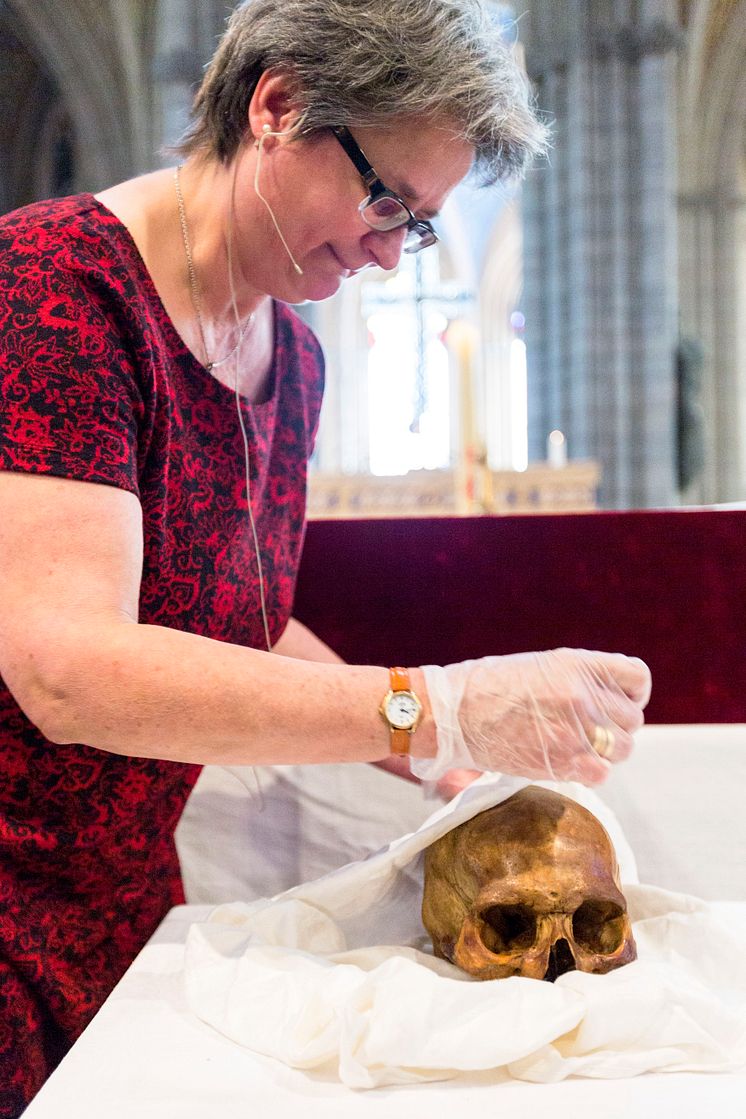
Image -
The scull of Saint Erik
Project leader Sabine Sten, professor of osteoarchaeology at Uppsala University with the scull of Saint Erik at the 2014 press conference when the reliquary was opened.
The legends speak of a saint king who died a dramatic death in battle outside the church where he had just celebrated mass. But what can modern science tell us about his remains?
Mikael Wallerstedt
- License:
- Creative Commons Attribution, no derivatives
With a Creative Commons license, you keep your copyright but allow people to copy and distribute your work provided they give you credit. You permit others to copy, distribute and transmit only unaltered copies of the work — not derivative works based on it.
- By:
- Mikael Wallerstedt
- File format:
- .jpg
- Size:
- 3505 x 5257, 3.93 MB